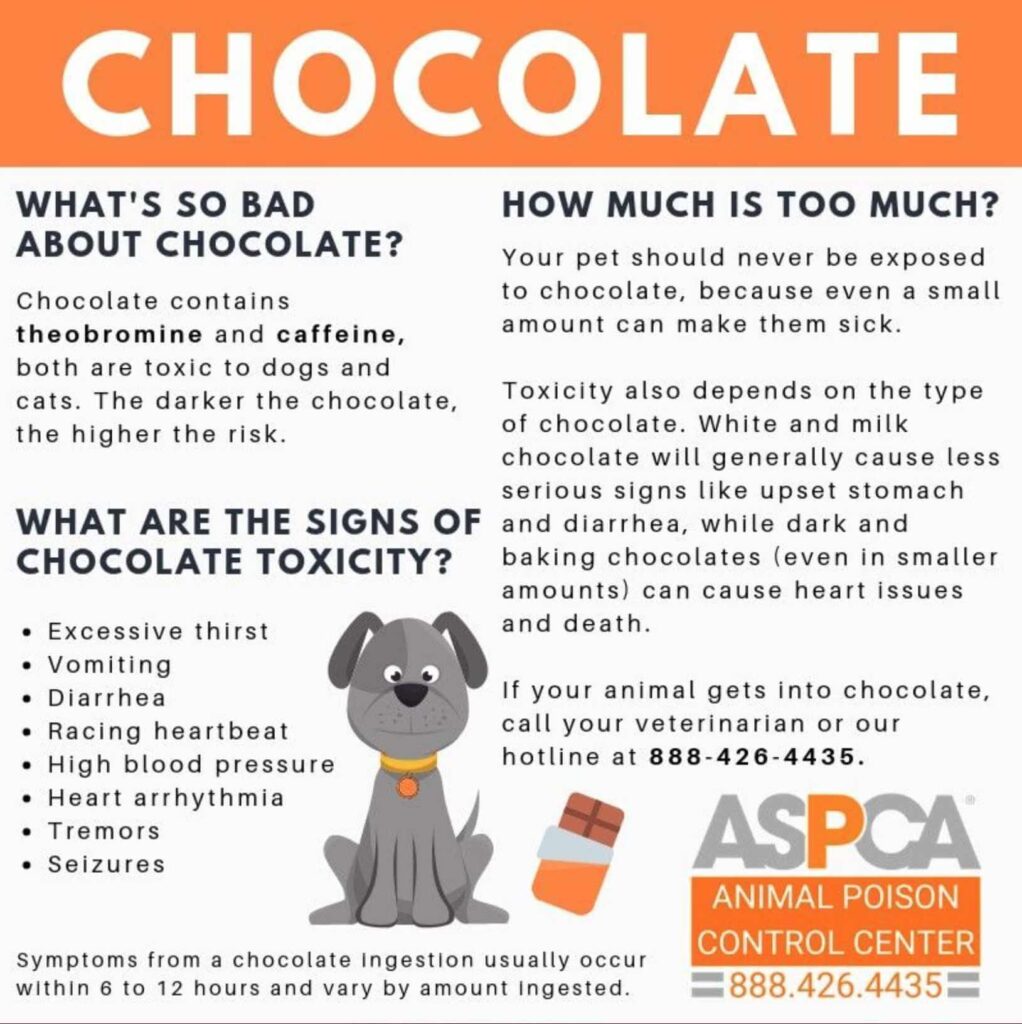
Chocolate, a beloved treat for humans, can pose a serious threat to our animal companions. While we enjoy its rich flavor and satisfying texture, many animals lack the ability to properly process certain compounds found in chocolate, leading to potentially life-threatening consequences. This article delves into the dangers of chocolate toxicity in animals, exploring the mechanisms behind its harmful effects, the symptoms to watch for, and crucial steps to prevent accidental ingestion.
This comprehensive guide will examine the specific risks associated with chocolate consumption in various animal species, focusing on dogs, cats, and rabbits. We’ll delve into the role of theobromine, a key component responsible for chocolate’s toxicity, and its impact on animal physiology. Furthermore, we’ll outline the telltale signs of chocolate poisoning and provide practical advice on how to safeguard your pets and livestock from this hidden danger.
Chocolate Toxicity in Animals
Chocolate contains compounds that are toxic to most animals, including dogs, cats, rabbits, and even some birds. The primary culprit is theobromine, a stimulant similar to caffeine found naturally in cocoa beans. While humans can metabolize theobromine relatively easily, many animals lack the necessary enzymes to break it down effectively. This leads to a buildup of theobromine in their systems, causing a range of adverse effects.
The severity of chocolate toxicity depends on several factors, including the type and amount of chocolate consumed, the animal’s size and weight, and its individual sensitivity. Dark chocolate and baking chocolate contain higher concentrations of theobromine than milk chocolate or white chocolate. Smaller animals are more susceptible to poisoning because even small amounts of chocolate can have a significant impact on their systems.
Theobromine and Its Effects
Theobromine acts as a stimulant, affecting the central nervous system and cardiovascular system. In animals, it can cause a range of symptoms, from mild restlessness to severe seizures and heart problems. Theobromine’s effects are similar to caffeine in humans, but animals are much more sensitive to its toxic properties.
When ingested, theobromine is absorbed into the bloodstream and travels throughout the body. It stimulates the release of adrenaline, leading to increased heart rate, blood pressure, and respiration. Theobromine also affects the central nervous system, causing hyperactivity, restlessness, tremors, and seizures. In severe cases, it can lead to cardiac arrest and death.
Metabolic Differences
The key reason why chocolate is toxic to animals lies in their metabolic differences compared to humans. While humans possess efficient enzymes that readily break down theobromine, many animals lack these specific enzymes. This inability to metabolize theobromine effectively results in its accumulation in the body, leading to the aforementioned adverse effects.
Symptoms of Chocolate Poisoning
Recognizing the symptoms of chocolate poisoning is crucial for prompt veterinary intervention. Early detection and treatment can significantly improve an animal’s chances of recovery. Common symptoms include:
- Gastrointestinal upset: Vomiting, diarrhea, increased thirst, and loss of appetite are often the first signs of chocolate toxicity.
- Hyperactivity and restlessness: Animals may exhibit excessive energy, pacing, panting, and difficulty settling down.
- Tremors and seizures: As theobromine levels rise, animals may experience muscle tremors, twitching, and eventually, full-blown seizures.
Other potential symptoms include:
- Increased heart rate and blood pressure
- Rapid breathing
- Disorientation and confusion
- Weakness and collapse
Dark Chocolate vs. Milk Chocolate
The type of chocolate consumed plays a significant role in the severity of poisoning. Dark chocolate and baking chocolate contain higher concentrations of theobromine than milk chocolate or white chocolate.
Dark chocolate: Due to its high theobromine content, even small amounts of dark chocolate can be extremely dangerous for animals.
Milk chocolate: While less potent than dark chocolate, milk chocolate still poses a risk, especially in larger quantities.
White chocolate: White chocolate contains very little theobromine and is generally considered the least toxic type of chocolate for animals. However, it’s still best to avoid giving any chocolate to pets.
Preventing Chocolate Consumption
Preventing accidental chocolate ingestion is crucial for protecting your animal companions.
- Store chocolate securely: Keep all types of chocolate out of reach of animals, in tightly sealed containers and high cabinets.
- Be mindful during celebrations: During holidays or special occasions, be extra vigilant about keeping chocolate away from pets. Supervise children closely to prevent them from sharing chocolate with animals.
- Educate family members and guests: Inform everyone in your household about the dangers of chocolate for animals and emphasize the importance of prevention.
Conclusion
Chocolate, while a delightful treat for humans, poses a serious threat to the health and well-being of our animal companions. Understanding the risks associated with chocolate toxicity, recognizing the symptoms of poisoning, and taking preventive measures are essential for ensuring the safety of your pets and livestock. By being aware of these dangers and practicing responsible pet ownership, we can help keep our furry friends safe from this hidden hazard.
